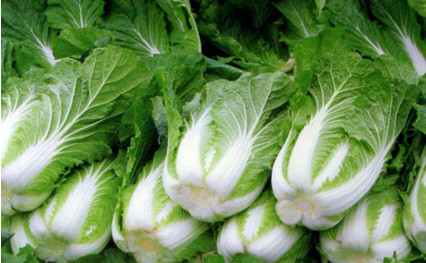How does Phytolacca reproduce
Phytolacca acinosa is a kind of herbaceous plant, which mainly grows in hilly areas such as southern China. Phytolacca is divided into many varieties, which are called differently in different regions, and the medicinal value of Phytolacca is higher. The root is the main part of medicine, but we should pay attention to the color when selecting the root, and the white one is the edible part. Red contains toxins, and now there are more and more people growing Phytolacca on a large scale, so how should Phytolacca reproduce? What is the environment in which it grows? Let's take a look at it.

1. Seed propagation
The most basic propagation method of Phytolacca is seed propagation, which grows fast, so direct sowing or seedling transplanting can be used. Usually start sowing after the Beginning of Spring, pay attention to sowing density when sowing, and consider the growth of Phytolacca acinosa plants in the later stage. The number of seeds in each planting hole should not exceed 10. Cover it in time after sowing and cover it with a layer of forage if necessary to maintain soil temperature and improve water and fertilizer conservation. About 3-4 weeks after sowing, seedlings will emerge one after another. Ask the seedlings in time that there should be no more than two seedlings in each hole. If the seedlings are transplanted, the seedlings are now sown in the nursery bed, and when the seedlings grow to 8-10 cm, they are transplanted in cold, sunless weather.
2. Root colonization
Another way is to plant the roots, and the roots of Phytolacca can be propagated. The method of root propagation is usually carried out around the beginning of December every year, when planting, select the fleshy root with thick bud root, and then select the part of bud root, and the incision of bud root should not be less than 3. Then smear an appropriate amount of plant ash at the cut to promote germination. When planting, we should also pay attention to the planting density to prevent the late growth from being too dense, affect each other's nutrient absorption and hinder the growth and development. After planting, cover the soil for fertilization and watering according to the situation.
3. Growth environment
The growth ability of Phytolacca is very strong, and wild can be found in all kinds of topography in our country, so it can be seen that Phytolacca has no requirement for soil. As long as it is given a certain amount of time, it can grow and develop normally in almost any soil. However, Phytolacca grows most vigorously in a warm and humid environment, and the most suitable temperature for the growth of Phytolacca is about 25 degrees. Although the temperature is low in autumn and winter, the aboveground parts will gradually wither, but the root of Phytolacca philoxeroides has a strong ability to withstand low temperature and can adapt to the temperature of minus 16 degrees. After the temperature rose in the spring of the next year, the root vitality gradually increased and began to germinate to promote the growth of plants on the ground.
The above is a brief introduction to the breeding methods and growth environment of Phytolacca. Although Phytolacca is a well-known traditional Chinese medicine, what we must pay attention to is the toxin of Phytolacca. After all, the poison of Phytolacca is even more toxic, so special attention should be paid to whether it is planting or buying. That's all for today's introduction. This article is for reference only. Thank you for your reading and support.
- Prev

High-yield planting and Culture techniques of early-maturing Autumn Chinese Cabbage
High-yield planting and Culture techniques of early-maturing Autumn Chinese Cabbage
- Next

Maintenance methods and matters needing attention of Acorus calamus
Maintenance methods and matters needing attention of Acorus calamus
Related
- Fuxing push coffee new agricultural production and marketing class: lack of small-scale processing plants
- Jujube rice field leisure farm deep ploughing Yilan for five years to create a space for organic food and play
- Nongyu Farm-A trial of organic papaya for brave women with advanced technology
- Four points for attention in the prevention and control of diseases and insect pests of edible fungi
- How to add nutrient solution to Edible Fungi
- Is there any good way to control edible fungus mites?
- Open Inoculation Technology of Edible Fungi
- Is there any clever way to use fertilizer for edible fungus in winter?
- What agents are used to kill the pathogens of edible fungi in the mushroom shed?
- Rapid drying of Edible Fungi

